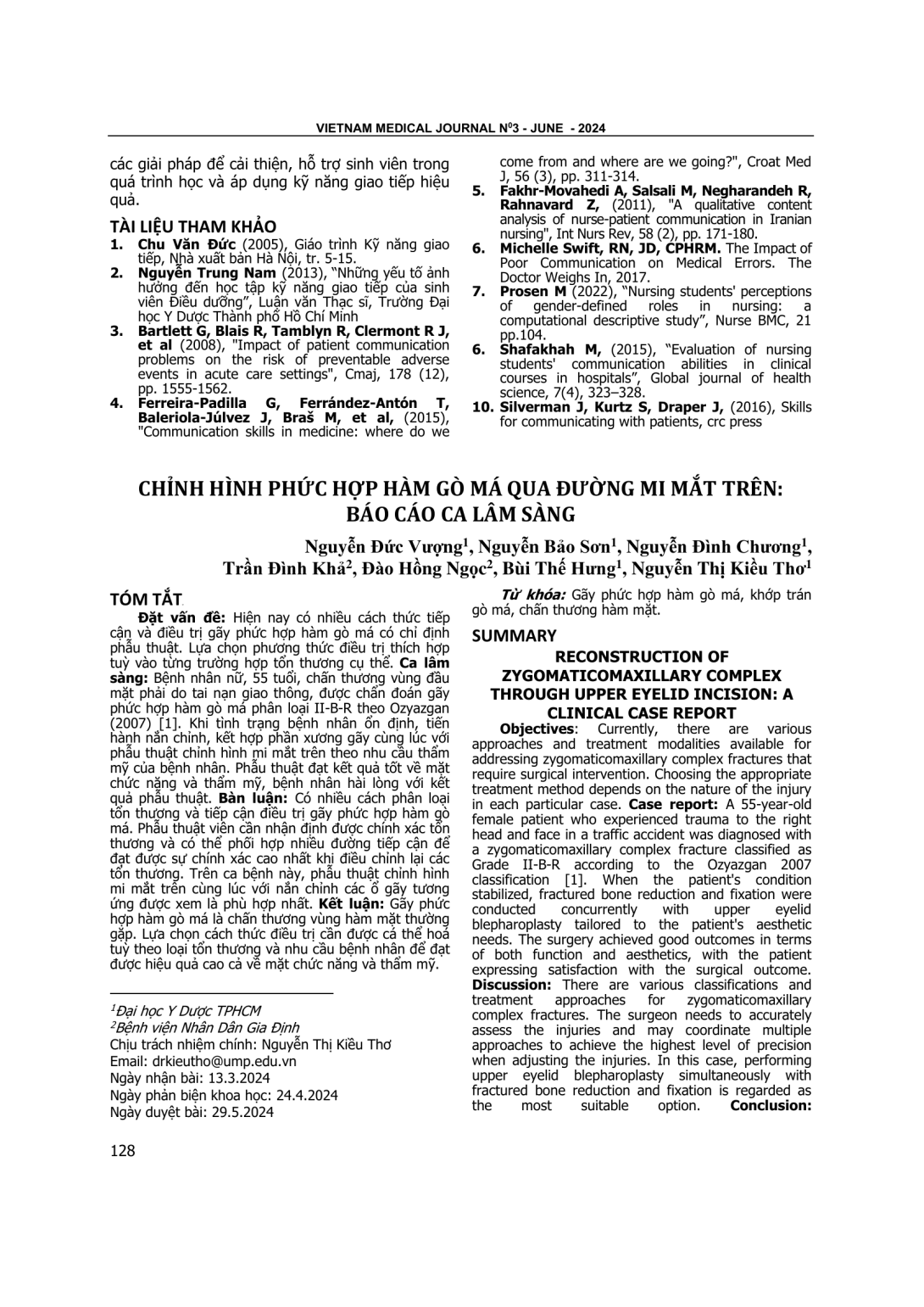
Hiện nay có nhiều cách thức tiếp cận và điều trị gãy phức hợp hàm gò má có chỉ định phẫu thuật. Lựa chọn phương thức điều trị thích hợp tuỳ vào từng trường hợp tổn thương cụ thể. Ca lâm sàng: Bệnh nhân nữ, 55 tuổi, chấn thương vùng đầu mặt phải do tai nạn giao thông, được chẩn đoán gãy phức hợp hàm gò má phân loại II-B-R theo Ozyazgan (2007) [1]. Khi tình trạng bệnh nhân ổn định, tiến hành nắn chỉnh, kết hợp phần xương gãy cùng lúc với phẫu thuật chỉnh hình mi mắt trên theo nhu cầu thẩm mỹ của bệnh nhân. Phẫu thuật đạt kết quả tốt về mặt chức năng và thẩm mỹ, bệnh nhân hài lòng với kết quả phẫu thuật. Bàn luận: Có nhiều cách phân loại tổn thương và tiếp cận điều trị gãy phức hợp hàm gò má. Phẫu thuật viên cần nhận định được chính xác tổn thương và có thể phối hợp nhiều đường tiếp cận để đạt được sự chính xác cao nhất khi điều chỉnh lại các tổn thương. Trên ca bệnh này, phẫu thuật chỉnh hình mi mắt trên cùng lúc với nắn chỉnh các ổ gãy tương ứng được xem là phù hợp nhất. Kết luận: Gãy phức hợp hàm gò má là chấn thương vùng hàm mặt thường gặp. Lựa chọn cách thức điều trị cần được cá thể hoá tuỳ theo loại tổn thương và nhu cầu bệnh nhân để đạt được hiệu quả cao cả về mặt chức năng và thẩm mỹ.
Currently, there are various approaches and treatment modalities available for addressing zygomaticomaxillary complex fractures that require surgical intervention. Choosing the appropriate treatment method depends on the nature of the injury in each particular case. Case report: A 55-year-old female patient who experienced trauma to the right head and face in a traffic accident was diagnosed with a zygomaticomaxillary complex fracture classified as Grade II-B-R according to the Ozyazgan 2007 classification [1]. When the patient's condition stabilized, fractured bone reduction and fixation were conducted concurrently with upper eyelid blepharoplasty tailored to the patient's aesthetic needs. The surgery achieved good outcomes in terms of both function and aesthetics, with the patient expressing satisfaction with the surgical outcome. Discussion: There are various classifications and treatment approaches for zygomaticomaxillary complex fractures. The surgeon needs to accurately assess the injuries and may coordinate multiple approaches to achieve the highest level of precision when adjusting the injuries. In this case, performing upper eyelid blepharoplasty simultaneously with fractured bone reduction and fixation is regarded as the most suitable option. Conclusion: Zygomaticomaxillary complex fracture is a common maxillofacial injury. Treatment options need to be personalized depending on the type of injuries and the patient's needs to achieve both functional and aesthetic results.
- Đăng nhập để gửi ý kiến
